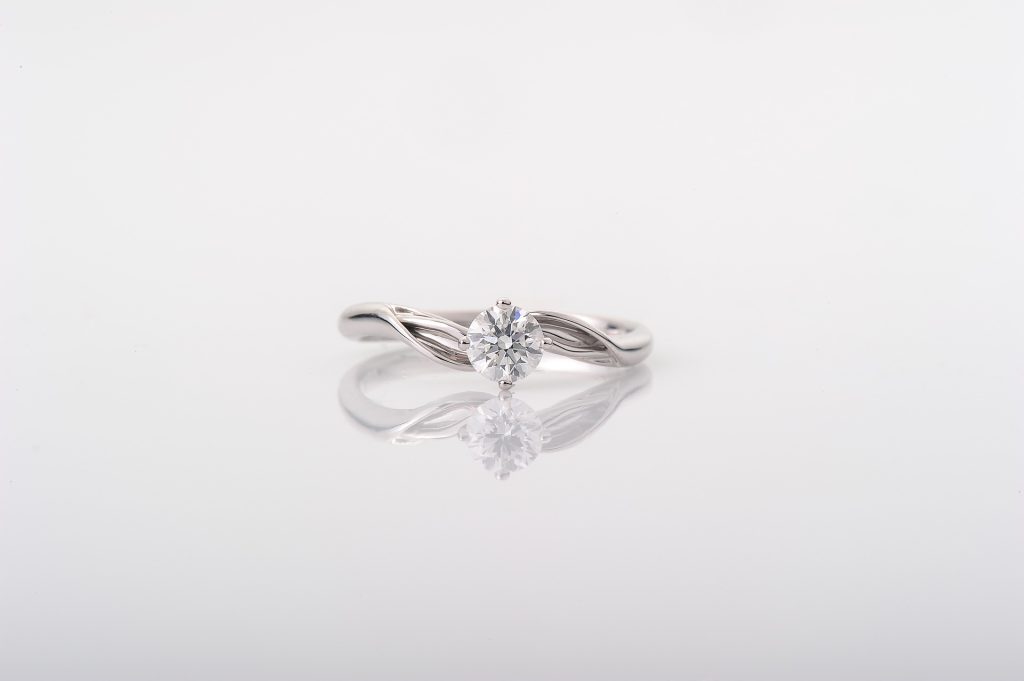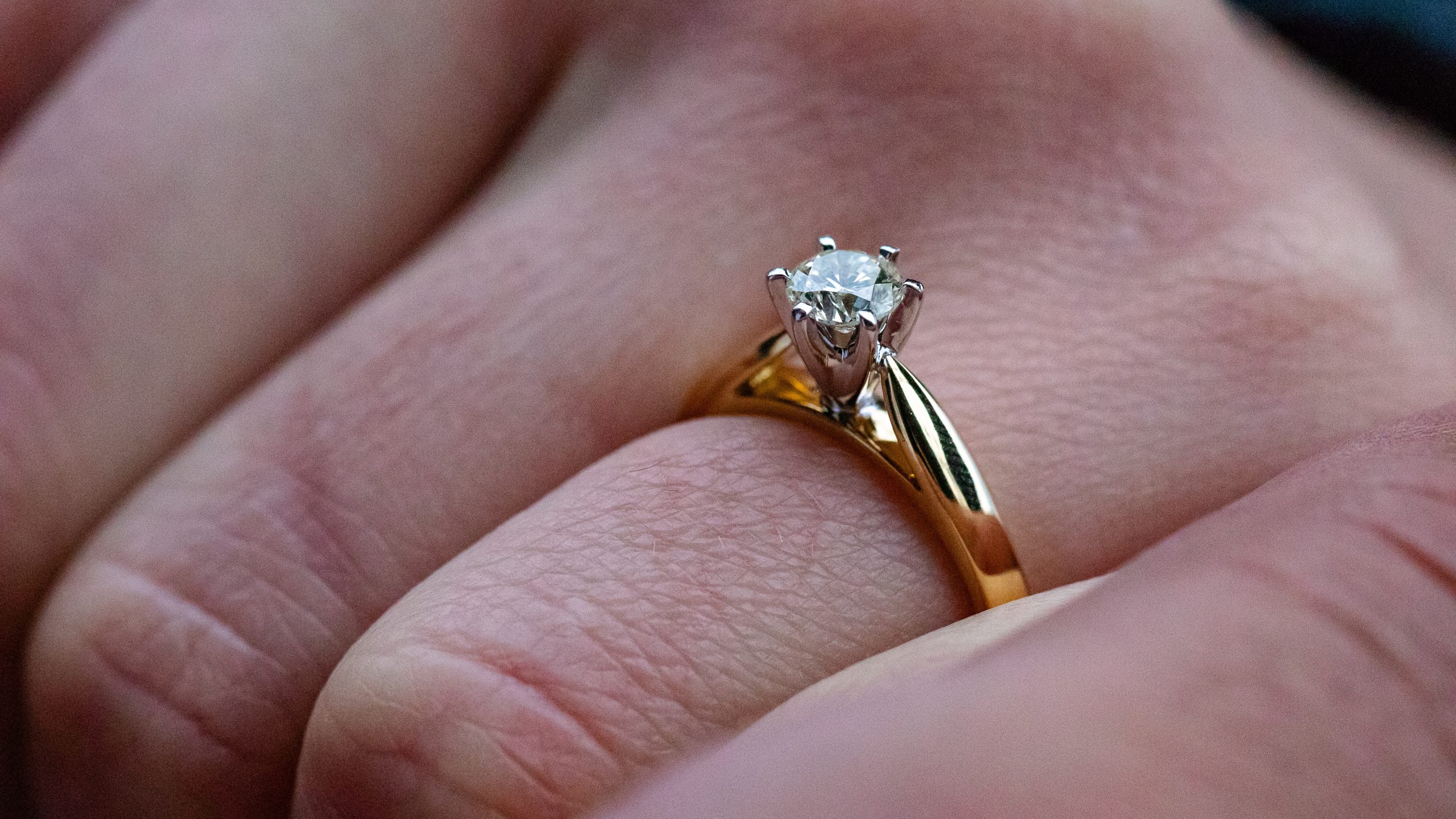Are you looking for information on how much a one carat diamond ring is? If so, this article will help you find the most relevant information on this topic. Diamond is widely used for wedding purposes and also to enhance your beauty. However, while thinking of buying diamond jewelry, people often find it difficult to understand its weight, price, and other relevant details. It might be a simple task to go to the jewelry shop and find lovely diamond jewelry for you. However, it’s channeling to get through the minor details while dealing with diamond jewelry.
One of the prevalent issues clients face while getting diamond jewelry is finding out the price and understanding its carat measurements. We have this article listed with various crucial points to make these queries easier for clients. You can go through the entire write-up and find out the details before you head towards getting a unique diamond piece. Moreover, feel free to contact for any related queries associated with the topic for brief details.
What is the Cost of 1 Carat Diamond Ring?
A 1-carat diamond typically costs between $1,800 and $12,000. The price of a diamond is determined by criteria such as cut quality, clarity, color, and shape. The cut quality of a 1-carat diamond has the most significant impact on its price and beauty. The price depends on the Cut, clarity, color, and Carat, or 4Cs of a diamond. The Cut helps define the sparkle and proportion of a stone. A rough diamond is not cut well and has a dull sparkle so that an excellent cut can produce a brilliant shine and brilliance.
This was the cheapest 1-carat diamond I could find on James Allen, and it doesn’t look like something you’d want to wear on your ring finger. On the other hand, James Allen has a 1 carat diamond for sale that is flawless. Is this, however, the wisest use of $12,000? We propose striking a balance between the two to optimize value and size.
The price of a 1-carat diamond is determined by several aspects that influence the diamond’s beauty. However, even though Carat is not directly measured in size, it is associated; size is a crucial driver of diamond pricing.
Also, depending on the quality of the diamond, a 1-carat diamond can range from $5,000 to $10,000. The ideal balance of quality and beauty makes this a high-quality stone worth the price. Despite the high cost, however, it’s well worth the money. Its white color and flawless Cut can add to the ring’s elegance. It’s the perfect choice for a woman’s engagement ring.
The weight of a diamond is measured in carats. Two hundred milligrams, or 0.2 grams, equals 1 carat. A 1-carat diamond is roughly the same weight as a quarter of a raisin.
The cost of a diamond is determined by its carat weight. A 1/2 carat diamond, for example, may cost $1,400 per Carat. The stone’s price would be $1,400 multiplied by 0.50, or $700.
Factors Affecting Diamond Cost
Now that you have a brief understanding of how much is a one carat diamond ring, you can now get to know what you need to consider while looking out for a diamond ring.
- The Cut of a diamond is a consideration. Choosing a round or oval diamond with an emerald cut can save you money. A rectangular shape is more expensive than a square one, and the price of a 1-carat diamond will depend on the setting and preferences. However, even a single stone can range from a few hundred to three thousand dollars. So, when buying a diamond ring, consider the stone’s clarity.
- Choosing the right setting is equally important. While most diamond rings are priced at over one thousand dollars, diamonds can be found in various settings. It would help if you considered the style of the ring when considering the cost of a ring. If the ring is for a woman, it will be very feminine. You’ll want to be sure it is appropriate for her style and personality.
- While the price of a one-carat diamond ring can be a surprisingly high amount, you should keep in mind that it’s an excellent value for the money. Often, a one-carat diamond will sell for anywhere from $1,200 to three thousand dollars. Whether you choose a platinum ring or a gold ring, a 1 carat stone will last a lifetime worth millions of dollars.
- The price of a one-carat diamond depends on its clarity grade. Higher-quality diamonds will be less expensive than low-quality diamonds. The clarity of a diamond will determine the cost. Having a high-quality stone will increase the value of your ring. And you can even choose to get a diamond with a lower clarity grade if you’re looking for a more stunning stone.
- A one-carat diamond can cost anywhere from $2,000 to $10,000. It’s important to remember that a one-carat diamond is not the same as the same-carat diamond in another shape. Its intrinsic characteristics and unique attributes differentiate a 1 carat stone from its counterpart. Because each of these factors is unique, it’s easy to see why a diamond costs so much, and the value of a one-carat stone in your jewellery may vary from location to location.
What is the Size of a 1 Carat Diamond Ring?
The diameter of a 1-carat diamond is roughly 6.5mm. This is the size of a perfectly proportioned round diamond. The surface area of other shapes may be bigger or smaller. Oval, pear, and marquise diamonds have a larger surface area, while princess and Asscher cut diamonds are smaller, with just around 5.5mm table size.
While a 1-carat diamond may appear insignificant, it is large enough to attract attention. Your ring’s size and carat weight should be considered, but you should also focus on selecting a well-cut diamond. Keep in mind that a carat is a weight measurement rather than a size measurement. As a result, two diamonds of the same Carat and shape may not be the same size. Despite having the same Carat, the proportions and hence visible size of a diamond might fluctuate slightly depending on how it is cut.
Keep in mind that a carat is a weight measurement rather than a size measurement. As a result, two diamonds of the same Carat and shape may not be the same size. Despite having the same Carat, the proportions and hence visible size of a diamond might fluctuate slightly depending on how it is cut.
Four C’s While Buying Dimond Ring
Each of the four C’s (Cut, Color, Clarity, and Carat) presents a diamond’s attractiveness. The rates a diamond obtains in these four zones provide a clear sign of its marker and, consequently, the proper expense you should be ready to disburse.
These four elements of a diamond are the most significant aspects that affect its formation and design. Within the diamond, the 4Cs interact with one another. They define the formation of the diamond as well as its rate. The ability of a diamond to reflect glow to your looks, for instance, is mainly defined by cut quality and shade, and transparency.
Cut
The ‘Cut,’ which affects a diamond’s attractiveness, is perhaps the essential element of its rate. Diamond cut guides to the slopes, measurements, balanced elements, brilliance, blaze, scintillation, and finishing details of a diamond. These factors directly affect a diamond’s sparkle capacity and overall appearance. For instance, this gorgeous Blue Nile diamond and this obvious conclusion. The Cut is the most helpful thing that divides the two.
Diamond-Cut is graded on a ranking of Ideal, Excellent, Very Good, Good, Fair, and Poor by the GIA. The Ideal and Excellent ratings represent ratios and angles cut for optimum brilliance and fire riding on the Diamond Shape.
Even if two diamonds have the exact cut grade on the diamond cuttable, the cuts of diamonds and diamond edges differ significantly. When a cutter aims for total Carat weight, the diamond may be overly deep or shallow for best light reflection. A diamond may also be cut to reduce the number of imperfections, boosting its clarity while sacrificing maximum brilliance. Even an Ideal cut diamond might have an overly visible yellow hue that detracts from the gem’s attractiveness. You may have also heard of triple ex diamonds (excellent Cut, polish, and symmetry). Many people believe that these diamonds are worth the premiums charged by some jewelers, but the reality is a little different.
Color
The hue of a diamond is measured in terms of how white or colorless it is.
Diamonds are graded from D to Z by the GIA, with D being the most colorless and Z having a notable brown or yellow tint. The diamond color chart below depicts how each grade appears compared to the others. While the diamond color chart depicts how each grade appears, it’s critical to examine each diamond separately. The hue of a diamond can vary depending on the Cut, carat weight, and form of the stone.
The grade of a diamond is frequently reflected in its price, which can be significant. Although the price difference between two nearby color-graded diamonds may be significant, the human eye cannot identify the difference in most circumstances.
Clarity
The Clarity grade determines how free of imperfections and flaws it is. The GIA uses the following diamond clarity table to grade clarity:
- IF (Flawless Flawless)
- VVS1 is a one-of-a-kind (Very, Very Slightly Included 1)
- VVS2 (Very, Very Slightly Included 2)
- VS1 (Very Slightly Included 1)
- VS2 is a platformer (Very Slightly Included 2)
- SI1 (Single Item) (Slightly Included 1)
- SI2 is a subset of SI1 (Slightly Included 2)
- I1(Inclusions 2)
It’s worth noting that each diamond is somewhat different. Instead of subscribing to a specific grade on the diamond clarity chart, examine each diamond to discover if there are any flaws. Blemishes and inclusions can interfere with light as it flows through the diamond, depending on its size, location, and darkness. The diamond’s brilliance and beauty are muted, detracting from the high-quality Cut. The prime tip for clarity is to make sure the diamond is eye clean and that no imperfections interfere with light reflection.
Carat Weight
When people hear the word “carat weight,” they frequently assume it relates to the diamond’s size. On the other hand, Carat refers to the diamond’s weight rather than its size. A 1-carat diamond weighs about a quarter of a raisin and 200 milligrams or 0.2 grams. Two 1 carat diamonds may be considerably varied in size depending on the Diamond Shape and how it is cut. While carat weight is essential when purchasing a diamond, the overall beauty and brilliance should be prioritized. For example, no matter how much more it weighs, a mediocre 1.5 Carat diamond will not sparkle as brightly—or attract as much attention—as a magnificent 1.0 Carat diamond.
Each of the four C’s contributes to a diamond’s overall beauty and individuality. On the other hand, a diamond should be considered complete. Because the eye has trouble distinguishing one diamond feature from another, like Clarity or Color, it’s crucial to consider how the four C’s interact.
Conclusion
You will always receive more bang for your buck when you shop online. Because of the lower profit margins and enormous inventory, you can take your time choosing the ideal stone within your range. Look for brands that sell the most incredible diamond imaging and supplementary diamond reports. These can be more effective than gazing through a jeweler’s loupe, which requires practice and challenge for a diamond rookie. This article has given you a clear view of how to treat diamond rings while you are on the way to purchase one. Enjoy enhancing your fingers with unique diamond rings and making them shine.








